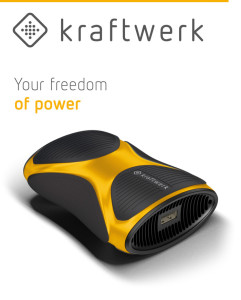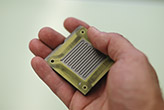Scenario to Explore: Micro Fuel cells finally hit mainstream news cycle in 2022 when everyone at Burning Man sings their praises as reliable sources of electricity. By 2025 the industry debate over recharging (battery) vs refueling (fuel cells) for electronic devices shifts tone as global manufacturers cut the cord from the grid and embed micro fuel cells insider everything from laptops to floor lamps. Even in 2025 most people are still unclear how fuel cells work and how they are different but batteries but they celebrate cutting the cord and embrace the design, performance and convenience of refueling devices.
Energy
Why I just backed a Kickstarter FuelCell Project for Personal Power
 5 minute Summary: I just backed a micro fuel cell project on Kickstarter that is on track to raise $1 million! Why? There is a very seductive vision based on a new distribution model for portable fuels and micro power plants. This post highlights a vision for 2030 when any person in the world can buy clean hydrogen-rich molecule fuels and mini power plants (micro fuel cells) on any local retail shelf. Read more
5 minute Summary: I just backed a micro fuel cell project on Kickstarter that is on track to raise $1 million! Why? There is a very seductive vision based on a new distribution model for portable fuels and micro power plants. This post highlights a vision for 2030 when any person in the world can buy clean hydrogen-rich molecule fuels and mini power plants (micro fuel cells) on any local retail shelf. Read more
IEA 2015 World Energy Outlook Report
The International Energy Agency (IEA) is the world’s most recognized energy information and forecasting organization. The IEA is the starting point for understanding the complex interplay of government policies, private sector markets and the dyanmics of end-user demand.
Here are my take aways from the event as well as the IEA World Energy Outlook from 2015 presentation shown at the event.
Framing the Debate: Refueling Fuel cells vs Recharging Battery Electric Vehicles
I had a brief Twitter stream exchange with Christoper Mims, Chris Nelder, and John Licata (all brilliant people; respect!) where I threw out some alternative assumptions on two future directions of electric vehicles via plug-in battery versus hydrogen fuel cells. Friends and colleagues have asked why I am so skeptical of battery-powered EVs. Read more
Energy Revolution Ahead? Utilities may soon favor Fuel Cells over Solar
 Solar power receives more media attention and seems to capture our imagination around the ‘future of energy’, but fuel cell energy appliances represent a more compelling distributed power strategy for utilities looking to develop solutions for commercial customers who demand more resiliency, always-on power and a reduced carbon footprint.
Solar power receives more media attention and seems to capture our imagination around the ‘future of energy’, but fuel cell energy appliances represent a more compelling distributed power strategy for utilities looking to develop solutions for commercial customers who demand more resiliency, always-on power and a reduced carbon footprint.
Today we sense high expectations for the future of solar, and either complete confusion, indifference or disdain to the future of fuel cells. Fuel cells are often over-sold by evangelists or dismissed by skeptics but within a decade, energy pundits may speak of fuel cells as being a more radical (and practical) energy innovation platform than solar energy. With fuel cells you can imagine putting a power plant in every hand, home or community.
Fuel Cells Aiming for Respect 2015-2020
Fuel cells are solid-state electrochemical energy conversion devices that convert hydrogen-rich chemical fuels (natural gas; hydrogen; propane; ammonia) into electricity, heat and steam.
Fuel cells use a scalable and modular design architecture to gain tremendous versatility in applications from handheld portable power, to larger units found in transportation and stationary power used in factories, data centers, residential homes and megawatt sized power parks.
In the late 1990s fuel cells were over-sold and hyped alongside Dotcom enthusiasm. In recent years the science, engineering and business models have made tremendous progress. Improved industry learning curves and falling production cost curves, and increased demand for reliable distributed electricity production have set the stage for fuel cell industry growth over the next decade.
Growth will be slow, steady — but unrelenting in challenging current business models and market realities for utilities, automakers, and portable device makers. The next five years will be an exciting phase for fuel cells finally coming to market. Analysts, customers and energy companies will be looking for revenues and respect.
